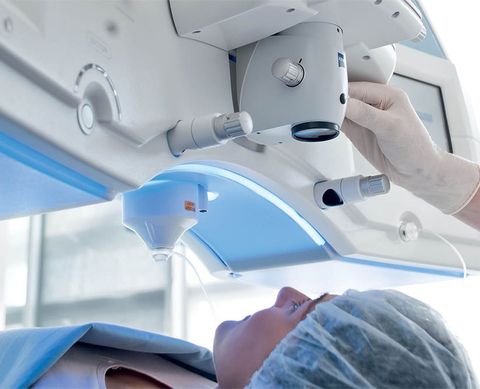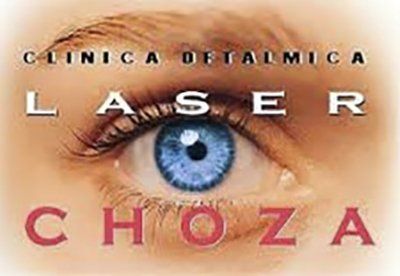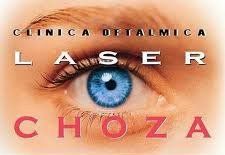Specialized Testing
Specialized Testing
Specialized Testing
Refraction and Visual Acuity
This test is carried out in order to know the refractive state of the eye, which is very important in the study of all pathologies.
Visual acuity is taken without crystals and with far and near crystals, esquiascopy and subjective exams.
The ophthalometric examination is fundamental since this gives us to know the different ametropia that each patient presents.
It is very useful to use a lens meter to know and / or rectify the graduation of the crystals.
Visual acuity is taken without crystals and with far and near crystals, esquiascopy and subjective exams.
The ophthalometric examination is fundamental since this gives us to know the different ametropia that each patient presents.
It is very useful to use a lens meter to know and / or rectify the graduation of the crystals.

Keratometry
This test allows to measure the amount of dioptric power of the cornea and to know the value of the corneal astigmatism that the patient presents, as well as the axis of the cylinder.
It also makes it possible to verify the existence of microcorneas, microphthalmos.
Through it we obtain the data for the calculation of the intraocular lens in patients with cataracts, as well as for the indication of contact lenses.
This test is very useful for the assessment of patients who will undergo refractive surgery.
It also makes it possible to verify the existence of microcorneas, microphthalmos.
Through it we obtain the data for the calculation of the intraocular lens in patients with cataracts, as well as for the indication of contact lenses.
This test is very useful for the assessment of patients who will undergo refractive surgery.
Biometrics
Through this test you can know the axial length of the eye, the depth of the anterior chamber and the thickness of the lens.
This test is useful for the monitoring of congenital glaucoma and the evolution of progressive myopia.
It is an important parameter for the calculation of Intraocular Lens in patients who are operated on cataract and in the programming of refractive surgery.
This test is useful for the monitoring of congenital glaucoma and the evolution of progressive myopia.
It is an important parameter for the calculation of Intraocular Lens in patients who are operated on cataract and in the programming of refractive surgery.
Pachymetry
This test is to measure the thickness of the cornea at different points, in order to assess the condition of the cornea in relation to the pathologies.
This test is very important for refractive surgery, keratoconus and Glaucoma monitoring. This measure is given in microns.
This test is very important for refractive surgery, keratoconus and Glaucoma monitoring. This measure is given in microns.
Tonometry
Taking of the ocular pressure with air tonometer available in the auto refracto.
This test allows us to diagnose glaucoma or other pathologies that may increase IOP. The normal values range between 10 and 21 mmHg.
This test allows us to diagnose glaucoma or other pathologies that may increase IOP. The normal values range between 10 and 21 mmHg.
Pericampimetría
This test is of great importance from the clinical point of view since we can determine alterations through it, not only in the retina but in the entire path of the visual path that includes the optic nerve.
This test allows to assess the state of sensitivity of the retina obse rva the extension, location and importance of a lesion
In the consultation, 4 different techniques are used for diagnosis:
This test allows to assess the state of sensitivity of the retina obse rva the extension, location and importance of a lesion
In the consultation, 4 different techniques are used for diagnosis:
- TOPCON
Computerized perimetry equipment that uses suprathreshold stimuli and is used in the diagnosis and monitoring of pathologies of the retina and the optic nerve
- FDT
Computerized bifurcated perimetry equipment that uses specific stimulation and explores the macrocellular pathway with value fundamentally in the early diagnosis of Glaucoma
- HFA 750-II
Computerized perimetry equipment with threshold and suprethreshold testing possibilities, also incorporates the PALOC (computerized short wavelength perimetry). Perimeter of last generation, useful in the diagnosis and monitoring of pathologies of the retina and optic nerve. The incorporation of PALOC is useful in the early diagnosis of Glaucoma
- Visual Field in Tangent Display
It is used in patients of advanced age who can not perform computerized tests, with very poor visual acuity, for the diagnosis and monitoring of diseases of the retina and the optic nerve.
Corneal topography
This test is used to study the surface and corneal curvature.
It is very useful in the study of patients who are candidates to undergo refractive surgeries and in their post-surgical follow-up, as well as in the diagnosis of pathologies such as Keratoconus.
It is very useful in the study of patients who are candidates to undergo refractive surgeries and in their post-surgical follow-up, as well as in the diagnosis of pathologies such as Keratoconus.
Aberrometría
The results of the refractive aberrations are obtained from the cornea, crystalline to the posterior pole of the eye by means of the SCHWIND Aberrometer.
Endothelial microscopy
A cell count of the endothelium is obtained.
Ophthalmological Exams Guadalajara Mexico
Lázer Choza
We care about one of the most wonderful gifts of life: the gift of sight
Schedule Appointment
Contact
Gulf of Cortes 2980
North Vallarta
Guadalajara, Jalisco, ZIP 44690
PHONES:
01-800 581-3424
USA 01152 (33) 3616-3391
(33) 3615-2016
(33) 3615-2017
Copyright © 2019 Oftalmologist Guadalajara Mexico




